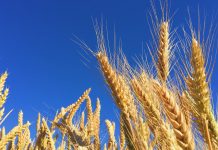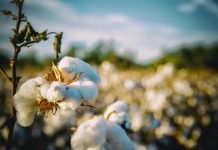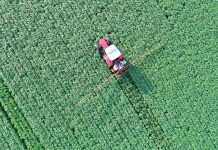A ferrugem asiática da soja, causada pelo fungo obrigatório Phakopsora pachyrhizi, é o principal desafio para os produtores de soja, especialmente na América Latina, onde são produzidas aproximadamente 192 milhões de toneladas (USDA, 2019), representando um valor bruto de produção de US $ 61,4 bilhões por ano (CONAB, 2019).
Esta doença devastadora pode levar a perdas de até 90%, se não for controlada. Os custos de manejo para os agricultores excedem US $ 2 bilhões por safra somente no Brasil. O patógeno é capaz de adaptar às estratégias de controle, de modo que o número de soluções práticas para o controle da doença é limitado. Para acelerar a inovação, desenvolver novas características e descobrir novos modos de ação contra P. pachyrhizi, a disponibilidade de um genoma de referência de alta qualidade é essencial.
Isso não tinha sido alcançado até o momento por causa do tamanho e complexidade do genoma desse patógeno que dificultava sua caracterização pelas técnicas tradicionais de sequenciamento.
Para enfrentar esse desafio foi estabelecido um consórcio internacional único, representando 12 instituições públicas e privadas. Este esforço conjunto congrega a Fundação 2Blades, a Bayer, a Empresa Brasileira de Pesquisa Agropecuária (Embrapa), as Universidade Alemãs de Hohenheim e de RWTH Aachen, o Instituto Nacional da Pesquisa Agronômica (INRA-França) e a Universidade de Lorraine (França), além do Joint Genome Institute (JGI, EUA), da KeyGene, do Laboratório Sainsbury (Reino Unido), da Syngenta e a Universidade Federal de Viçosa (Brasil).
Hoje, esse consórcio anuncia a conclusão do sequenciamento e montagem não apenas do genoma de um, mas de três isolados de P. pachyrhizi. Um conjunto de tecnologias de sequenciamento de última geração foi usado para fornecer leituras de fragmentos de DNA pequenos (Illumina) ou longos (PacBio). Para um dos isolados, o consórcio se beneficiou da experiência do JGI no âmbito do Programa de Ciência para a Comunidade.
Para outro isolado, a KeyGene disponibilizou sem custos sua mais recente plataforma de sequenciamento de leitura longa, Promethion da Oxford Nanopore, permitindo uma montagem de elevada qualidade. Isso resultou em uma redução de 10 vezes no número de segmentos montados (scaffolds) para este isolado e em uma montagem em nível de cromossomo. Para um terceiro isolado, importantes contribuições em bioinformática foram fornecidas pela Syngenta.
Todas essas novas tecnologias foram fundamentais para o sucesso da iniciativa de desvendar a natureza complexa do seu genoma. Além disso, o JGI está fornecendo a sua plataforma para hospedar e disponibilizar publicamente esses recursos genômicos para toda a comunidade científica. Todos os dados estão disponíveis para a comunidade científica no link .
A montagem do genoma de referência de P. pachyrhizi abrange 1,057 Gb, representando um dos maiores genomas entre fungos e, de fato, patógenos vegetais em geral. O sequenciamento revelou que o genoma é extremamente rico em sequências repetitivas e DNA não codificante, constituindo aproximadamente 90% de todas as sequências.
O genoma também abriga várias famílias de transposons, elementos que podem permitir que o patógeno se adapte rapidamente a novos ambientes. Apesar de seu tamanho, o número de genes preditos em seu genoma é de cerca de 20.700, o que é semelhante ao número encontrado em outros fungos da ferrugem.
Para entender melhor quais partes do genoma estão ativas nos vários estágios do ciclo de vida do fungo, o consórcio também gerou um atlas de expressão (transcriptoma) de todas as estruturas fúngicas em diferentes estágios de infecção do patógeno. Esse conhecimento contribuirá para melhorar a anotação e ampliar o conhecimento dos mecanismos moleculares explorados por P. pachyrhizi durante a infecção pela soja.
Com o sequenciamento completo do genoma de P. pachyrhizi, substanciado pela análise da expressão gênica e ressequenciamento de isolados, o consórcio espera alavancar essas informações com a comunidade científica para decifrar a biologia do fungo e entender, no nível molecular, a sua complexa interação com a soja.
A conclusão do sequenciamento e montagem do genoma do fungo de uma maneira inovadora e aberta é uma ótima notícia para toda a comunidade científica. Isso ampliará o entendimento da adaptabilidade, evolução e diversidade genética de P. pachyrhizi, abrindo caminho para estratégias baseadas nesse conhecimento para o controle da ferrugem asiática na soja, afirmou a pesquisadora da Embrapa, Francismar C. Marcelino-Guimarães.
Detalhes sobre os membros do Consórcio Internacional
About the DOE Joint Genome Institute The U.S. Department of Energy Joint Genome Institute (JGI), a DOE Office of Science User Facility at Lawrence Berkeley National Laboratory, is committed to advancing genomics in support of DOE missions related to clean energy generation and environmental characterization and cleanup. JGI, headquartered in Walnut Creek, Calif., provides integrated high-throughput sequencing and computational analysis that enable systems-based scientific approaches to these challenges. Follow @jgi on Twitter.
DOE’s Office of Science is the largest supporter of basic research in the physical sciences in the United States, and is working to address some of the most pressing challenges of our time. For more information, please visit science.energy.gov.
About INRA
INRA is the largest agricultural research institute in Europe, with around 10 000 employees in 2018, and is the second largest producer of agricultural science publications worldwide. INRA develops knowledge and innovation in the fields of food, agriculture and the environment, through a research network unique in Europe – 184 research units and 42 experimental units located throughout France. INRA’s main goal is to contribute to the development of competitive and sustainable agricultural and forestry systems producing healthy and high-quality food as well as biomass for the bioeconomy, while actively participating to the global efforts to protect the environment and natural resources.
About Bayer
Bayer is a global enterprise with core competencies in the life science fields of health care and nutrition. Its products and services are designed to benefit people by supporting efforts to overcome the major challenges presented by a growing and aging global population. At the same time, the Group aims to increase its earning power and create value through innovation and growth. Bayer is committed to the principles of sustainable development, and the Bayer brand stands for trust, reliability and quality throughout the world. In fiscal 2018, the Group employed around 117,000 people and had sales of 39.6 billion euros. Capital expenditures amounted to 2.6 billion euros, R&D expenses to 5.2 billion euros. For more information, go to www.bayer.com.
About Embrapa
The Brazilian Agricultural Research Corporation (Embrapa) was created on April 26, 1973 and is linked to the Ministry of Agriculture, Livestock and Supply (Map). Since its inception, it has taken on a challenge: to develop, together with our partners in the National Agricultural Research System (SNPA), a model of genuinely Brazilian tropical agriculture and livestock, overcoming barriers that limit food, fiber and energy production in the country.
This effort helped transform Brazil. Today Brazilian agriculture is one of the most efficient and sustainable in the world. We incorporated a large area of degraded land from the cerrado to the productive systems. A region that today accounts for almost 50% of our grain production. We quadrupled the supply of beef and pork and expanded the supply of chicken by 22 times. These are some of the achievements that have made the country from being a staple food importer to being one of the world’s largest producers and exporters. Embrapa’s mission is to enable research, development and innovation solutions for the sustainability of agriculture, for the benefit of Brazilian society.
https://www.embrapa.br/en/international
About the 2Blades
Foundation The 2Blades Foundation, based in Evanston, Illinois, is a 501(c)(3) charitable organization dedicated to the discovery, advancement, and delivery of durable disease resistance in crops. 2Blades establishes and manages development programs addressing significant unsolved crop disease problems in collaboration with leading research institutions around the world and at the 2Blades Group in The Sainsbury Laboratory, Norwich, UK. 2Blades manages a portfolio of specific traits and enabling technologies that it implements in its own programs and out-licenses for broad use. Visit the 2Blades website at www.2blades.org and follow 2Blades on twitter at @2blades.
About The Sainsbury Laboratory
The Sainsbury Laboratory (TSL) is a world-leading research centre focusing on making fundamental discoveries about plants and how they interact with microbes. TSL not only provides fundamental biological insights into plant-pathogen interactions, but is also delivering novel, genomics-based, solutions which will significantly reduce losses from major diseases of food crops, especially in developing countries. TSL is an independent charitable company and receives strategic funding from the Gatsby Charitable Foundation with the balance coming from competitive grants and contracts from a range of public and private bodies, including the European Union (EU), Biotechnology and Biological Sciences Research Council (BBSRC) and commercial and charitable organisations www.tsl.ac.uk.
About The Federal University of Viçosa
The Federal University of Viçosa (UFV; Portuguese: Universidade Federal de Viçosa) is a Federal University with the main campus located in the city of Viçosa, state of Minas Gerais, Brazil. UFV offers 47 different undergrad courses in many areas, including engineering, agronomy, medicine, veterinary medicine, animal husbandry, and other areas related to science. The university has a highly reputed Graduate School as well, offering 36 Master’s degree programs and 24 for at PhD level. It is considered one of the best universities in Brazil, and in the General Index of Institution Courses (IGC) made by the Ministry of Education in 2009 was elected the 2nd best in Brazil and the 1st in the state of Minas Gerais
About Syngenta
Syngenta is one of the world’s leading agriculture companies. Our ambition is to help safely feed the world while taking care of the planet. We aim to improve the sustainability, quality and safety of agriculture with world class science and innovative crop solutions. Our technologies enable millions of farmers around the world to make better use of limited agricultural resources. With 28,000 people in more than 90 countries we are working to transform how crops are grown. Through partnerships, collaboration and The Good Growth Plan we are committed to improving farm productivity, rescuing land from degradation, enhancing biodiversity and revitalizing rural communities.
About the University of Hohenheim
The University of Hohenheim (UHOH) was founded as a school for agronomy in 1818 as a reaction to the devastating losses in agricultural production in Germany that came as a consequence of the eruption of the volcano Tambora in Indonesia in 1815. UHOH has eveloped considerably and today hosts almost 10,000 students, 145 professors and round 2,000 staff. UHOH is progressive in research, maintains a broad network, provides global perspectives, and is highly innovative. The width of study programs, the vicinity of the Faculty of Agricultural Sciences to the Faculty of Natural Sciences and the Faculty of Business, Economics and Social Sciences as well as the interdisciplinar research centres and multiple research foci are unique. UHOH ranks first in Agricultural Sciences in Germany, eighth in Europe, and 15th in the world. UHOH covers all different aspects of agriculture with a special focus on Microbiota-Livestock Interaction, Climate Change, Bioeconomy and Organic Farming.
About KeyGene
The crop innovation company KeyGene is the go-to AgBiotech company for higher crop yield & quality. With our intellectual capital, solution driven approach and collaborative spirit, we work for the future of global agriculture with partners in the AgriFood sector.
Using our proprietary technologies and non-GM approaches, we support customers with the development of new and improved crops. Our goal is to help organizations with their toughest R&D challenges, combining our cutting edge breeding technologies, bioinformatics & data science expertise and plant-based trait platforms. At KeyGene, we work in an international environment with more than 140 professionals from all over the world. Our company is based in Wageningen, Netherlands and Rockville, MD, USA.
About the RWTH Aachen University
The Rheinisch-Westfälische Technische Hochschule (RWTH) Aachen was founded in 1870. Today, almost 40,000 students are enrolled at RWTH. The university has nine faculties with 260 departments that are managed by 564 professors, 5,700 scientists, and 3,000 other staff. RWTH established a unique educational and networking research environment that embraces the convergence of knowledge, approaches, and insights from the humanities, economics, engineering, natural, and life sciences. Research foci include sustainable synthetic fuels, biotechnology, data mining, computational science, production technology, high-performance materials, health, renewable resources, and mobility. The so-called RWTH Aachen Campus provides a unique research environment for academic and industrial collaborations. RWTH Aachen Campus is highly visible and highlights the research power of the University. The entrepreneurial mindset and collaboration with industry benefit students, employees, and the society. For many years, RWTH Aachen has been continuously awarded excellence status by the German federal and state governments. Aachen is Germany’s westernmost city at the borders to Belgium and the Netherlands. The three countries, their various languages and cultures place Aachen in the center of a dynamic, international cross-border region. More than 9,500 international RWTH students from over 135 countries provide a highly international flair.
Contacts
- Bayer: Catherine Sirven, catherine.sirven@bayer.com – Phone: +33 4 72 85 20 98
- EMBRAPA: Francismar C. Marcelino-Guimaraes, francismar.marcelino@embrapa.br –
Phone: +55 43 3371 6265 - INRA / Université de Lorraine: Sébastien Duplessis, sebastien.duplessis@inra.fr –
Phone: +33 383 39 40 13 - RWTH Aachen University: Ulrich Schaffrath, schaffrath@bio3.rwth-aachen.de – Phone:
+49 241 8020100 - Syngenta: Victoria Kate Morgan, victoria_kate.morgan@syngenta.com – Phone:
+41 613 231 762 - The Sainsbury Laboratory / 2Blades: Peter van Esse, peter.vanesse@tsl.ac.uk –
Phone: +44 1603 450649 - Hohenheim University: Ralf T. Vögele, ralf.voegele@uni-hohenheim.de – Phone: +49
711 459 22387 - Federal University of Viçosa: Sergio Herminio Brommonschenkel, shbromo@ufv.br –
Phone: +55 3136122484 - US DOE JGI: David Gilbert, degilbert@lbl.gov – Phone: +1 925 296 5643
Fonte: Embrapa




